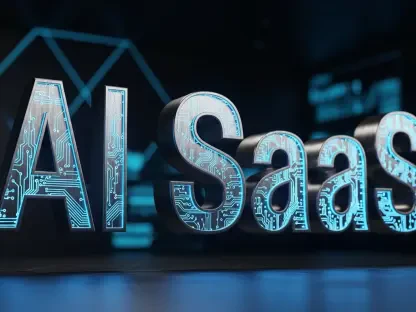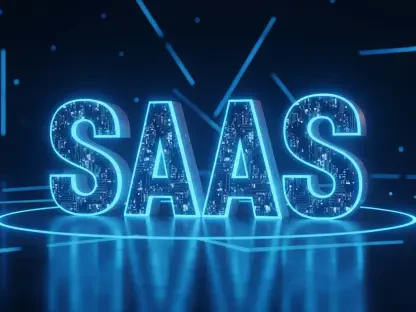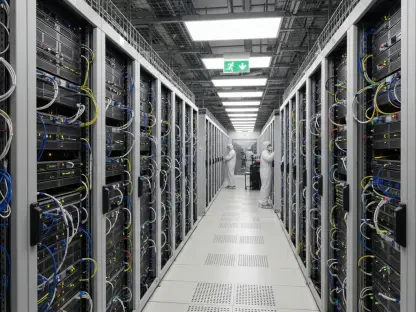Paul Lainez interviews Vijay Raina, a specialist in enterprise SaaS technology and tools, to discuss open source networking solutions. They cover industry trends, financial considerations, market perception, stakeholder engagement, and the challenges faced by open source networking solutions. They also delve into community contributions, security, scalability, and the future demand for these solutions.
Can you describe the main industry trends that are driving the demand for open source networking solutions?
Several trends are influencing this demand. First, organizations do not want to be locked into a single hardware vendor or silicon manufacturer. Flexibility to explore alternatives is a significant driver. Second, financial considerations play a crucial role. While hardware can often be relatively inexpensive, the services bundled with it tend to be very costly. Open source networking solutions eliminate service costs, allowing organizations to set up and manage their networks with smaller teams. This can reduce overall costs by 50-60%.
Why do organizations prefer not to be locked into a single hardware vendor or silicon manufacturer?
Organizations value flexibility and the ability to explore alternatives. They want the freedom to choose hardware and software solutions that best meet their needs without being constrained by a single vendor. This flexibility can lead to cost savings, better performance, and more innovation as they can select the best-in-class components from different vendors.
How do financial considerations impact the adoption of open source networking solutions?
Financial considerations play a crucial role in the adoption of open source networking solutions. While acquiring hardware might not be very expensive, the associated service costs bundled with proprietary solutions can be very high. Open source solutions allow organizations to reduce these service costs by setting up and managing their networks with smaller teams. This leads to significant overall cost savings, often reducing expenses by 50-60%.
Can you share how the market perception of SONiC has changed since its inception?
The market perception of SONiC has evolved remarkably. It started as a research project with a small, closely-knit community. Today, it has over 40 major contributors, including large OEMs and hyperscalers, more than 400 consumers across various industries, and thousands of developers actively contributing to its growth. The steady market growth and widespread adoption reflect its success and enhanced perception over the years.
Who are the primary stakeholders you engage with in the initial discussions about SONiC?
The Chief Technology Officer (CTO) or the head of the technical department and the purchasing team are key stakeholders. The CTO assesses the value and challenges of transitioning from legacy systems, while the purchasing team focuses on the financial benefits. Engaging these stakeholders ensures a comprehensive understanding of SONiC’s advantages and aids in smooth decision-making.
Why are the CTO and the purchasing team critical in the discussion of open source networking solutions?
The CTO plays a critical role in assessing the technical benefits and feasibility of transitioning to open source solutions, while the purchasing team is vital for understanding and addressing the financial implications. Their collaboration ensures that both technical and financial perspectives are thoroughly evaluated, facilitating informed decision-making and successful adoption.
How do open source networking solutions like SONiC compare with traditional proprietary software?
Traditional networking software often has slow feature updates, limited contributions, and heavy dependence on specific hardware vendors. In contrast, open source solutions like SONiC benefit from contributions by a broad community, leading to faster feature releases and reduced vendor lock-in. This allows compatibility with various hardware and chip vendors, fostering growth, agility, and innovation.
What are some of the drawbacks of traditional networking software?
Traditional networking software suffers from slow feature updates, limited contributions primarily from the vendor, and dependence on specific hardware vendors. This can lead to vendor lock-in, reduced flexibility, and slower innovation. The controlled environment limits the agility and responsiveness needed in today’s fast-paced networking landscape.
How does community contribution impact the development and feature releases of open source networking solutions?
Community contributions are vital for the development and feature releases of open source solutions. With a large number of developers involved, new features and improvements are introduced frequently, meeting market expectations. These contributions drive innovation and ensure that the solution evolves rapidly to address emerging needs and challenges.
What challenges do open source networking solutions face in expanding their market share?
One of the main challenges is building confidence in the reliability and availability of open source solutions. The transition from legacy networks also poses difficulties, including adopting new hardware and software and ensuring that personnel are trained. Over time, as successful implementations by major players like Microsoft and Dell increase, these challenges are expected to diminish.
How does the process of transitioning from legacy networks to open source solutions work?
Transitioning involves adopting new hardware and software and retaining or retraining personnel. It requires careful planning and phased implementation to minimize disruptions. Organizations need to develop a clear roadmap, ensure compatibility with existing infrastructure, and leverage the community’s resources for support and best practices during the transition.
Can you highlight how major companies like Microsoft, Dell, and Alibaba are contributing to the confidence in open source solutions?
The successful adoption of SONiC by major companies like Microsoft, Dell, and Alibaba has significantly boosted confidence in open source solutions. Their participation and contributions demonstrate the reliability and scalability of open source networks, encouraging other organizations to consider similar solutions.
In what ways does open source software drive innovation in the networking space?
Open source software, supported by initiatives like the Open Compute Project, accelerates innovation by allowing broad community contributions. Innovations in security, AI, and hardware support are rapidly integrated. For instance, SONiC has recently introduced support for modular chassis designs and advanced security features, illustrating ongoing innovation driven by community efforts.
What recent advancements in SONiC highlight its innovative capabilities?
Recent advancements in SONiC include significant security improvements and new features like support for physical servers and modular chassis designs. These innovations enable broader deployment scenarios, enhance network security, and demonstrate the platform’s capacity to evolve rapidly to meet diverse networking needs.
How scalable is SONiC, and are there any examples of its deployment in large-scale environments?
SONiC is highly scalable and is deployed in large-scale environments by major players like Microsoft and Alibaba. Alibaba’s rapidly growing data centers are a prime example, where SONiC operates flawlessly at scale thanks to its hardware-agnostic design, which ensures compatibility and seamless operation regardless of the underlying hardware.
How does SONiC ensure security for its open source networking software?
SONiC prioritizes security through a rigorous pull request review process before any code is approved for production. This ensures strict compliance with security criteria. Additionally, hardware vendors contribute extra security measures, creating dual layers of protection. These comprehensive strategies make SONiC a secure and reliable open source platform.
What is the process for ensuring code security before it is approved for production in SONiC?
Every feature in SONiC is subject to a rigorous pull request (PR) review process. This ensures that all contributions meet stringent security standards before being approved for production. Additionally, supplementary tools and hardware-level security measures from vendors fortify the platform’s security.
How sustainable is the open source model in delivering continuous development and innovation?
The open source model is highly sustainable due to its wide acceptance across different scales of organization. Large corporations and small enterprises alike benefit from the community-driven development, continuous feature updates, and lower costs. Companies offering tools and services for deployment further enhance sustainability, ensuring ongoing innovation.
Can you elaborate on the role of the community in the sustainability and reliability of open source solutions like SONiC?
The community is crucial for the sustainability and reliability of open source solutions. With active involvement from major companies like Google, Microsoft, and Dell and thousands of developers, the community drives consistent feature development and new releases. This collective effort ensures that SONiC continually evolves to meet market demands.
How do new contributors get involved in the SONiC project?
New contributors can join the project by developing or improving specific features and providing feedback on existing ones. The SONiC Outreach Community serves as a platform for gathering feedback and encouraging participation. Additionally, integration with the Linux Foundation offers training programs and certification courses to help developers get involved.
What educational initiatives are in place to train developers about SONiC?
Through its integration with the Linux Foundation, SONiC offers various educational initiatives, including free and advanced training programs and certification courses. These initiatives aim to empower developers with the knowledge and skills needed to contribute effectively to SONiC’s community-driven development.
Are there any specific events or conferences you use to promote SONiC and engage with the community?
There are several conferences where SONiC is actively promoted, including the Open Compute Conference in San Jose and regional events in countries like India, Japan, and China. For example, SONiC’s biggest conference has been hosted at Microsoft’s campus in India, drawing global participants and fostering community engagement.
How does SONiC manage compliance and licensing regulations for open source projects?
SONiC’s compliance and licensing are governed by the SONiC Outreach Community and the SONiC Governing Board under the Linux Foundation. Releases are managed to avoid overwhelming users while balancing the needs of different markets. Each update is signed off by the governing board, ensuring quality and compliance.
How do you foresee the demand for open source networking solutions evolving over the next few years?
The demand is expected to rise significantly as more organizations recognize the benefits of open source networking solutions. With widespread adoption by service providers, telcos, and enterprises, SONiC and similar solutions are poised to become even more prevalent in the industry, driven by their cost-effectiveness, flexibility, and continuous innovation.









